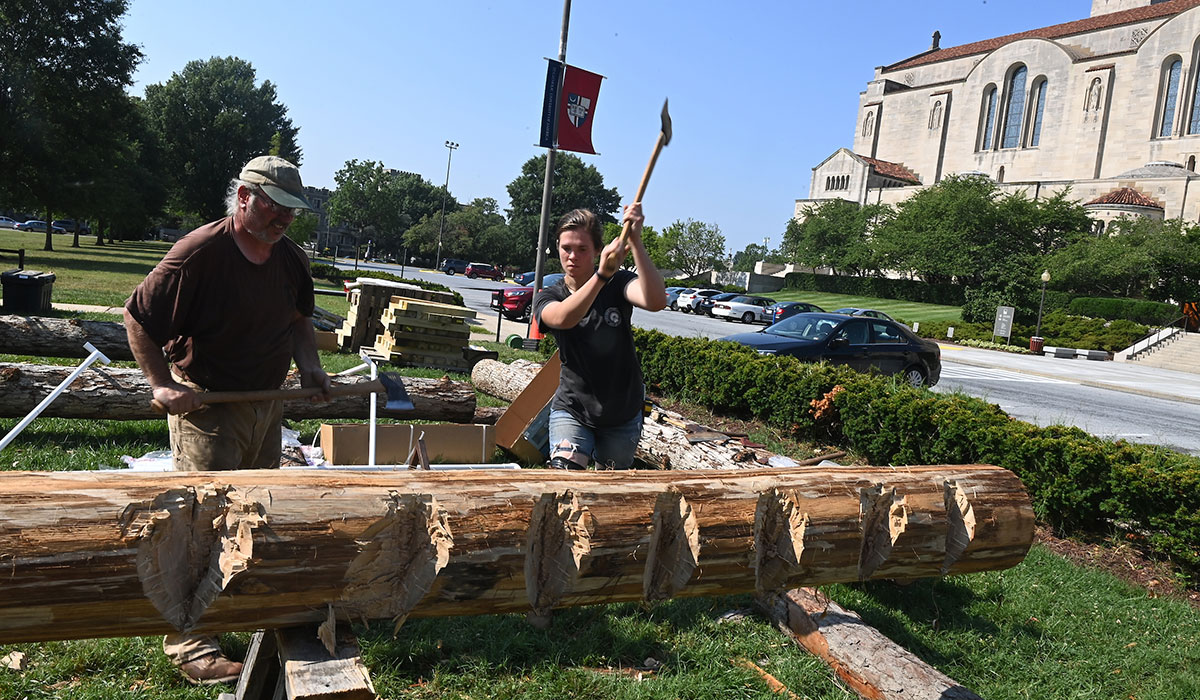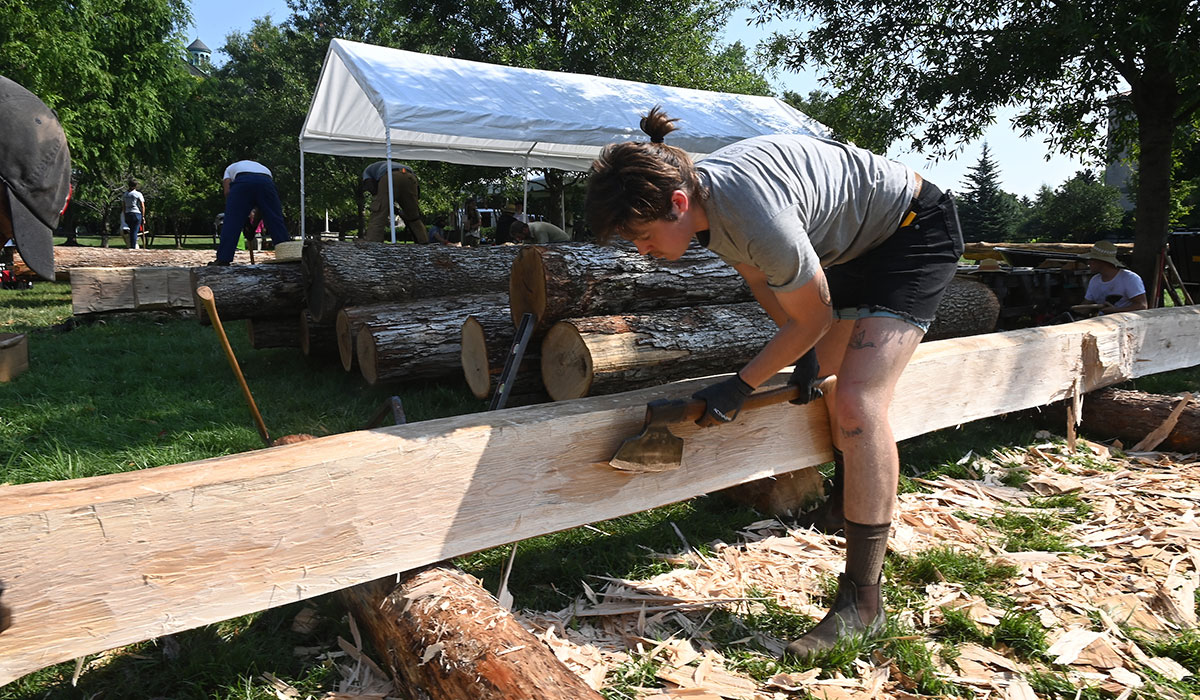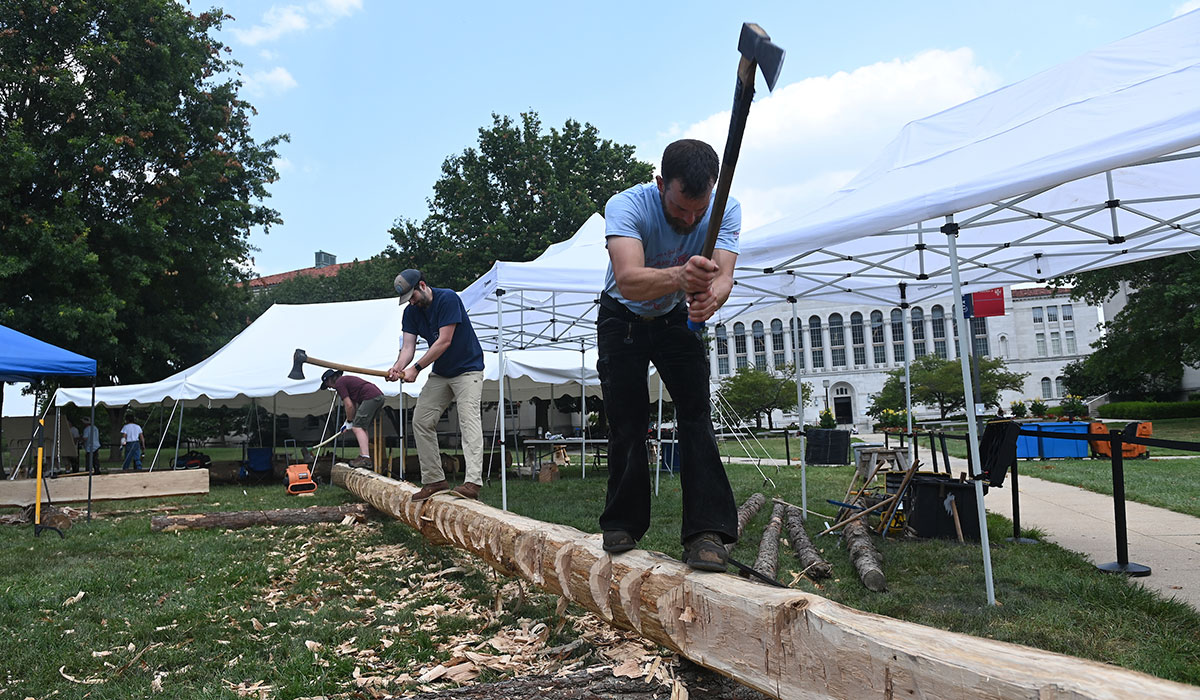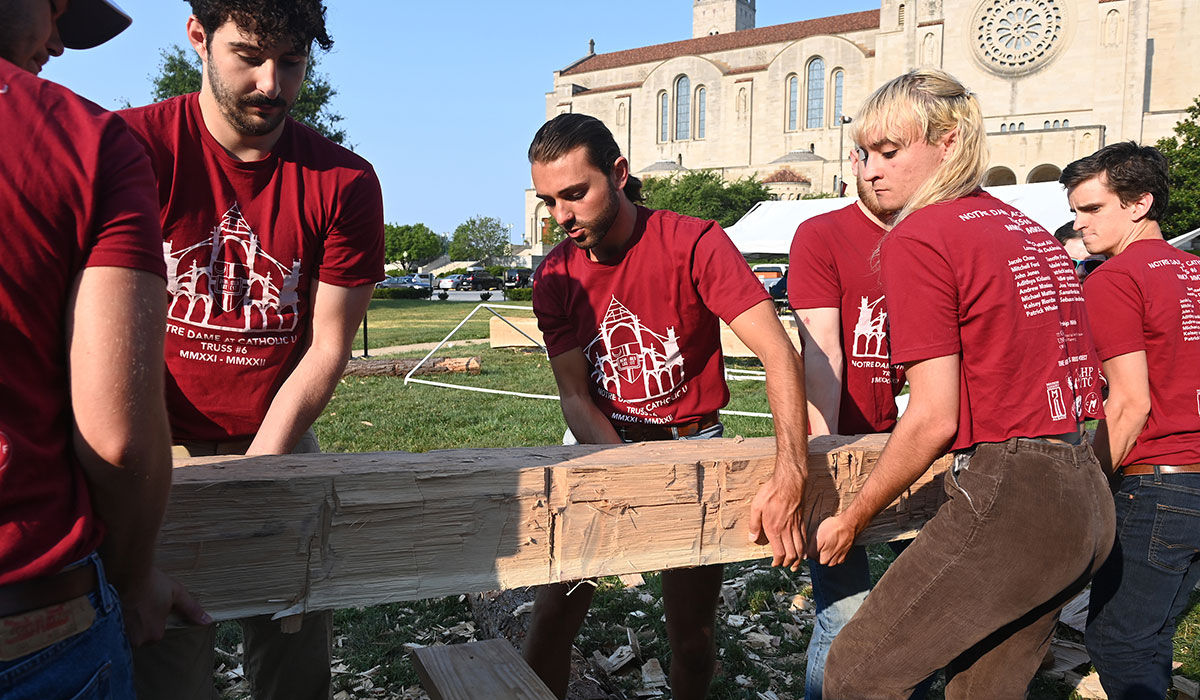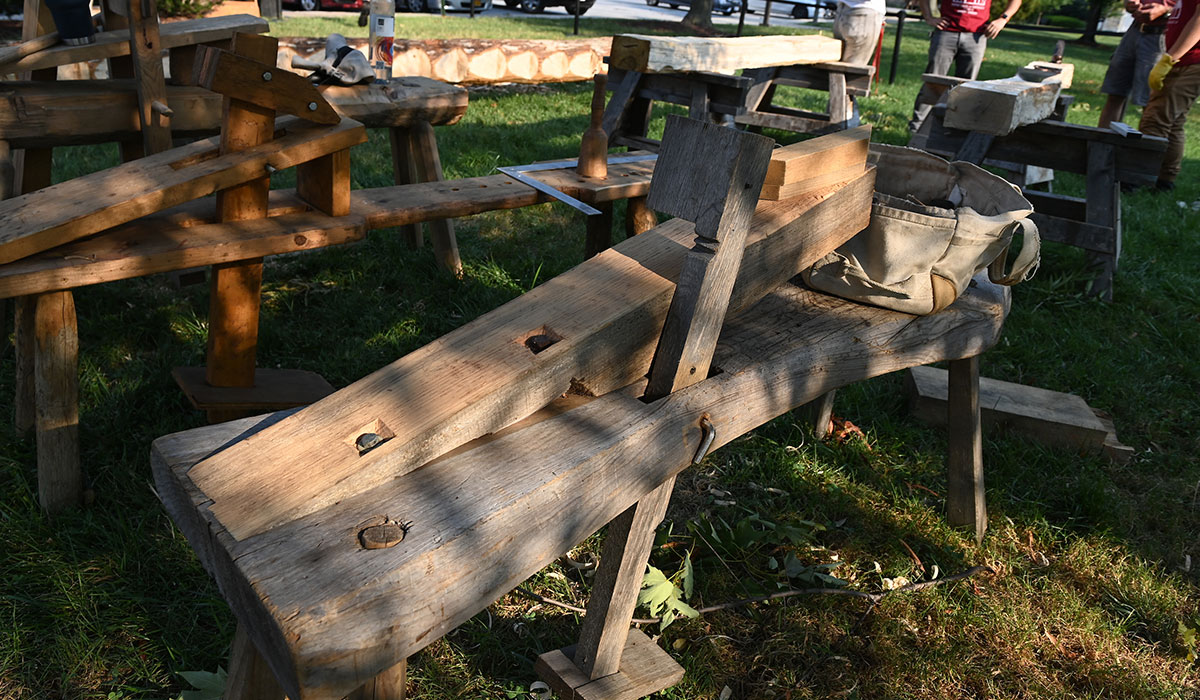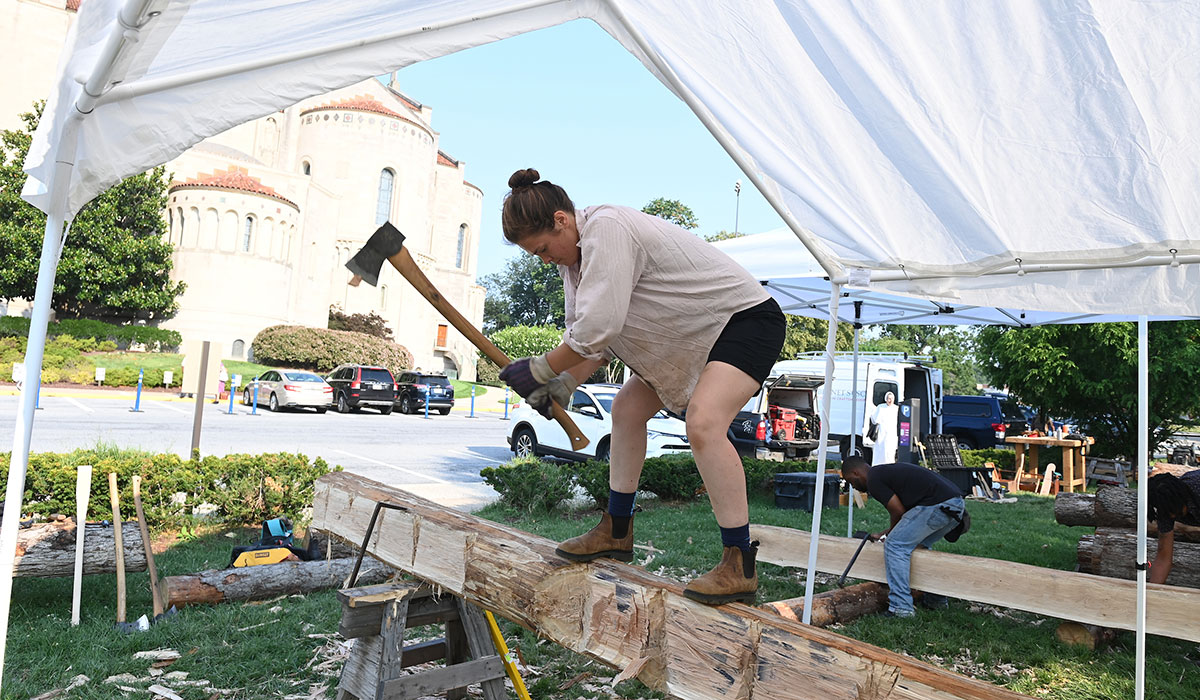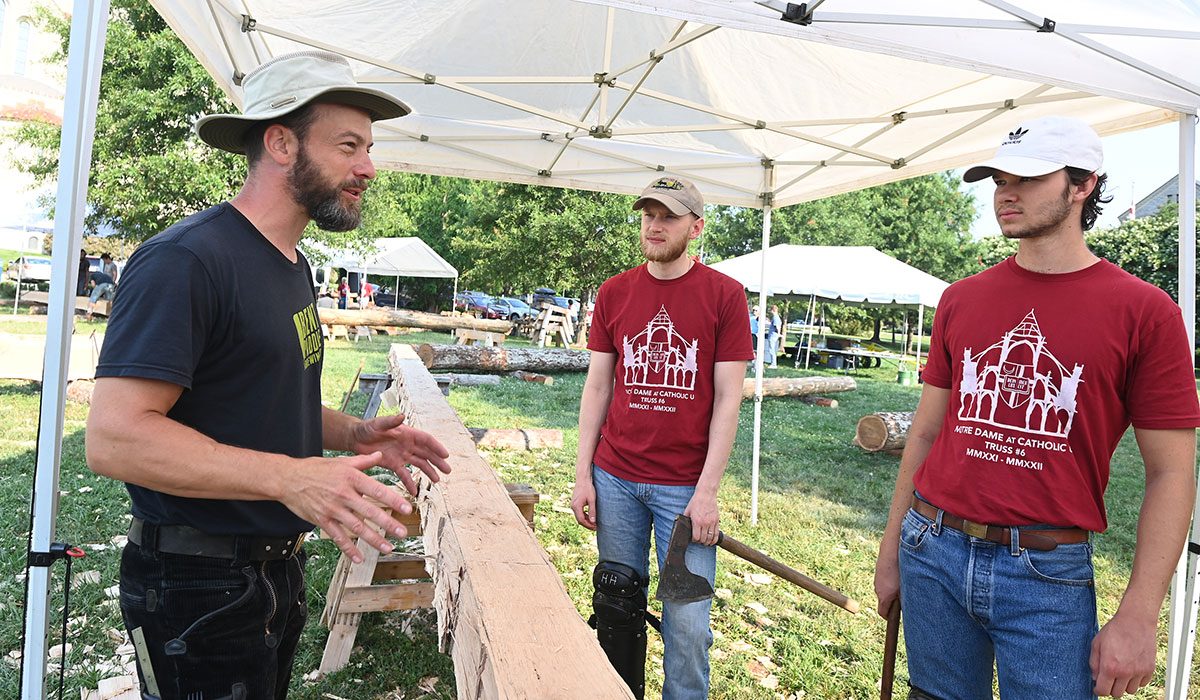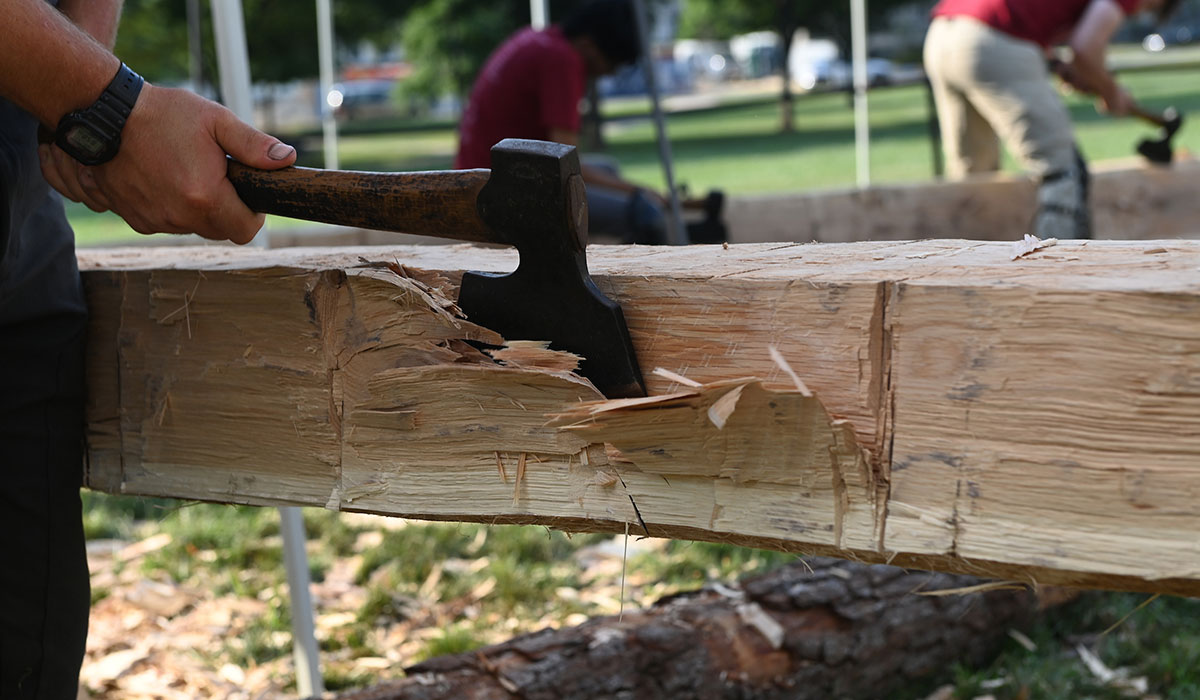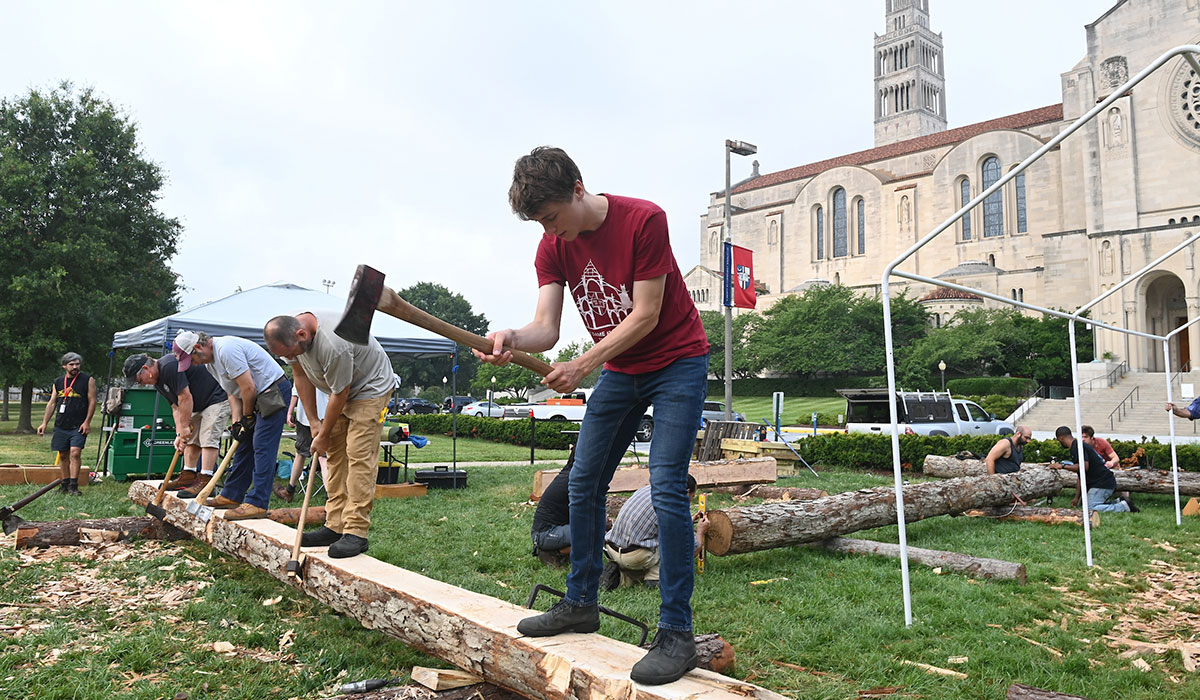
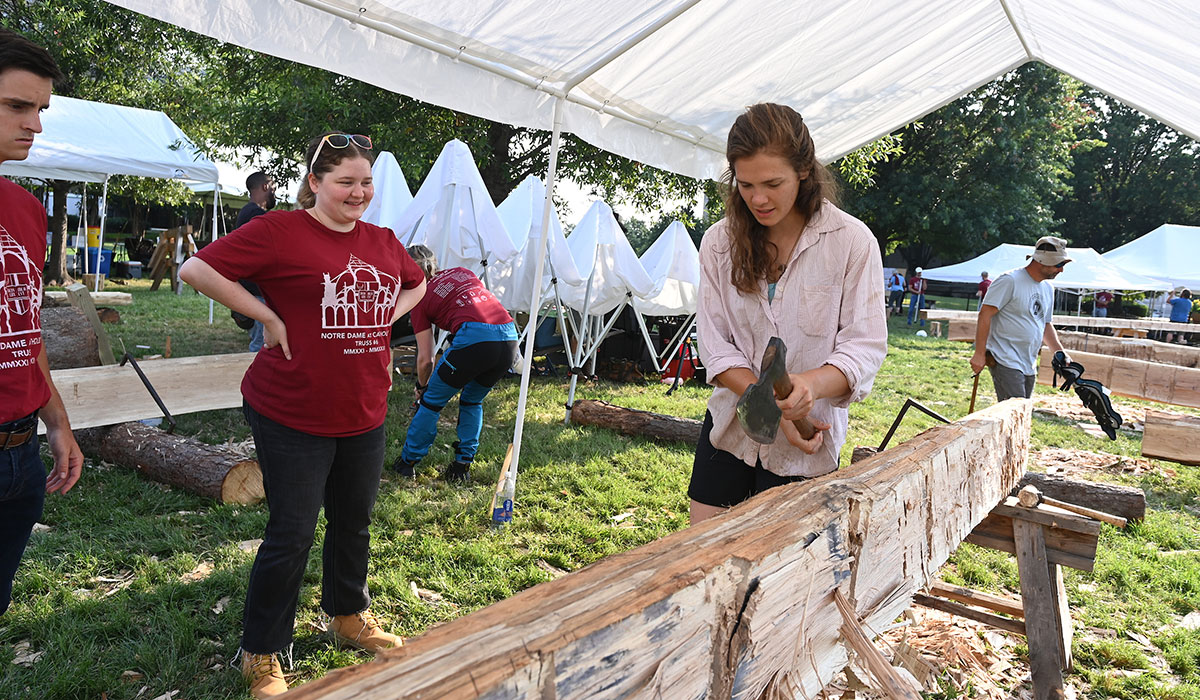
Visitors to Catholic University’s campus this week saw an unusual site on the University Lawn: a team of 40 carpenters and framers using axes to construct a large triangular shape out of 30 white oak logs. The team is building a replica of truss #6 from the Notre-Dame de Paris, one of 25 primary trusses which held up the cathedral roof. All of the original trusses were destroyed when the cathedral caught fire in 2019.
The truss project is part of a partnership between Catholic University’s School of Architecture and Planning and Handshouse Studio, a Massachusetts-based educational nonprofit, with the support of Charpentiers sans Frontière (Carpenters Without Borders), a group of carpenters who seek to replicate historical building methods. To build the truss, the team is using the official drawings created by French lead architects Rémi Fromont and Cédric Trentesaux of the Notre-Dame de Paris reconstruction process.
Tonya Ohnstad, the school’s associate dean of graduate studies, is teaching a tandem summer course on the history and reconstruction of the cathedral, which included a public lecture series featuring experts in medieval history, construction, and timber fields. Students in the course have studied the architecture and building methods of the French Gothic church and built 1:10 scale models of the trusses over the church’s choir. This week, they are working alongside the traditional carpenters on the lawn in front of the Basilica of the National Shrine of the Immaculate Conception to hew and cut the white oak logs into structural timbers.
No modern tools or equipment will be used in the construction process. All wood will be hand-hewn, and each piece of timber will be connected with pegs.
Architecture student Juan Soto is taking this class to finish up his bachelor’s degree before enrolling in the graduate architecture program this fall. On Wednesday, he was working with Handshouse volunteer Michael Burrey to cut down a log into one of the large pegs that will keep the truss together.
 “It’s amazing to have this opportunity to be out here learning with the framers right in front of the basilica,” Soto said. “This class has really helped us learn about timber framing and the connections and how these different joints were created. It’s really interesting to see it on paper, but then coming out here to the site, we get to see how it’s actually built, how it’s constructed, keeping in mind the traditions the French used back then.”
“It’s amazing to have this opportunity to be out here learning with the framers right in front of the basilica,” Soto said. “This class has really helped us learn about timber framing and the connections and how these different joints were created. It’s really interesting to see it on paper, but then coming out here to the site, we get to see how it’s actually built, how it’s constructed, keeping in mind the traditions the French used back then.”
Abigail Sekely, who graduated with her bachelor’s degree in architecture in 2020, is one of several alumni who have returned to campus to participate in the truss project. She thinks the project is a unique opportunity for students to see how a design comes to life in a massive way.
“To see the drawing and bring it to life on a scale of this magnitude is not something that is often done,” she said. She also thinks it's a rare opportunity to have a connection with the original cathedral in Paris.
“The building itself is such an icon of architecture,” she said. “If you analyze the history of Paris, the history of the French people, the history of the Church, it just goes on and on as to why this building is so important. The fact that I could have some tiny part of that is so special.”
Laura Brown, cofounder of Handshouse Studios, believes there is a deep educational value in replicating historic buildings like Notre-Dame with the original building methods.
“The maker is embedded in the object, and the knowledge of how it's made is embedded in the objects,” she said. “In order to learn that, you can kind of reverse engineer it. As you make it, you become familiar with the original maker — you get into the mind of the maker, the hands of the maker, and the tools.”
Ohnstad hopes that by participating in the course and the truss-building workshop, her students will have a greater understanding of their own place in the history of construction, and that they will have a deeper understanding of the basic and fundamental principles that have been passed on throughout history.
“I don’t see it so much as honoring the past as saying, ‘We’ve been gifted knowledge that has been acquired over a long time that we should take with us,’” she said. “There’s a lesson to be learned for the students in what comes after designing a building — how can we bring our designs to life.”
“The loss of the roof during the 2019 fire at Notre-Dame was devastating, complete, and more than simply material,” Ohnstad said. “It destroyed a forest of trees, generations of building technology, and an unimaginable amount of human spirit and energy embodied in the timber structure. What an incredible opportunity to be able to be part of the reconstruction, demonstration, and passing on of tectonic knowledge.”
The end result, which will be approximately 45 feet wide and 35 feet tall, will be blessed by Washington Cardinal Wilton D. Gregory and then hand-raised on campus on Aug. 3. Following the raising on campus, the truss will be moved to the National Mall for a one-day raising. It will then be exhibited at the National Building Museum.
